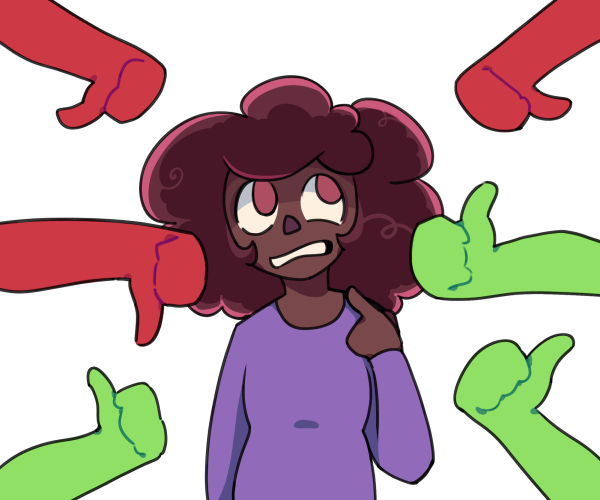Society wrongly dismisses bullying as solely female problem

Dismissing Drama: Tricking each other and betraying their friends, the characters of Mean Girls encompass all girl drama cliches. Movies like this, and others, show how bullying is misconstrued as an exclusively female problem.
February 23, 2017
You are the Greek Titan Atlas. Besides the weight of the world on your shoulders, there’s also some guy there punching you repeatedly in the neck. You try and get this guy off your case, but you can’t stop him and you can’t tell anyone. And even though you are an almighty Titan, being punched in the neck hurts and gets in the way.
Atlas too was a Titan who, unlike us, had to carry the weight of the world as a form of punishment from Zeus for losing in the battle between the Titans and the Gods. So now, besides the burden of the world, Atlas has to deal with his defeated emotions and have someone constantly beating him down (quite literally). Sound a bit familiar?
Although no one is in that situation literally, the analogy is applicable to the struggle that many children face at some point in their life: bullying. But this shouldn’t be so.
For students, bullying from another student causes them to be even less motivated to go to school and to take interest in their learning especially when the cause of bullying is specifically due to academics. If a student is doing exceptionally well, another student may find them threatening and try to suppress a student from doing their best or if a student was struggling in school, they could be susceptible to name calling.
Today bullying is as ordinary and overlooked as the common cold and is given as much thought as one would give to a seasonal sickness. Maybe even less so.
Neglect of bullying is even more prominent for genders other than girls because bullying has mostly been projected as an issue in primarily girls. This however, is not true; bullying can impact everyone and should not be dismissed for other genders as trivial or insignificant. Forms of conflict resolution should be promoted so that anyone, in any case, knows how to deal with bullying rather than only targeting bullying in girls.
Often times, bullying in boys can be dismissed as causal arguments or fights, or comments can be made such as “boys will be boys,” or “they’re just a little hotheaded,” but there should be more attention given regardless of how the situation may seem.
Physical or emotional problems can cause issues down the line for students of any gender and being comfortable with telling an adult or a friend about bullying issues is crucial to stopping it for everyone.
Public media has taken a stand to deal with bullying but again, most forms of media address how girls are being bullied by other girls such as in Mean Girls and Cyberbully. I have never seen or read of bullying in boys in all my education throughout elementary and middle school about dealing with harassment.
In fourth grade, bullying inflated to the point where the school decided on having assemblies and class talks about bullying and the importance of telling a trusted adult. However, in most of these assemblies, all examples would be given of how a girl, Linda, was being harassed online or in person by a group of people.
There were examples of many girls, but never of many Max’s or James, or Edward. As a girl who was being bullied at the time I did not notice because I was relieved by the news I was getting and the attention my problem was receiving as a whole.
Only now did it occur to me how students my age could have been facing the same problem. However, their problems may have ranged far further from the insults I received for being a girl and for my personality.
I believe that it is wrong to believe that bullying originates from just girls or that it impacts only girls. It is because bullying amongst girls has been given attention and used as the model the most that we assume bullying is a single gender issue. Bullying is not a gender trait and should not be defined as such because harassers can take advantage of such a social construct to harass someone of another gender, knowing the signs for them won’t be as easily read as it is for girls.
The concept of bullying and harassment has evolved and been redefined constantly by social media and by mental health experts. As it ever evolves, critical attention must be given to ensure that all genders in all situations are given the support and to feel comfortable enough to seek help when needed. Asking for help against a harasser should not be a privilege of a single gender, it should be a right for all.












